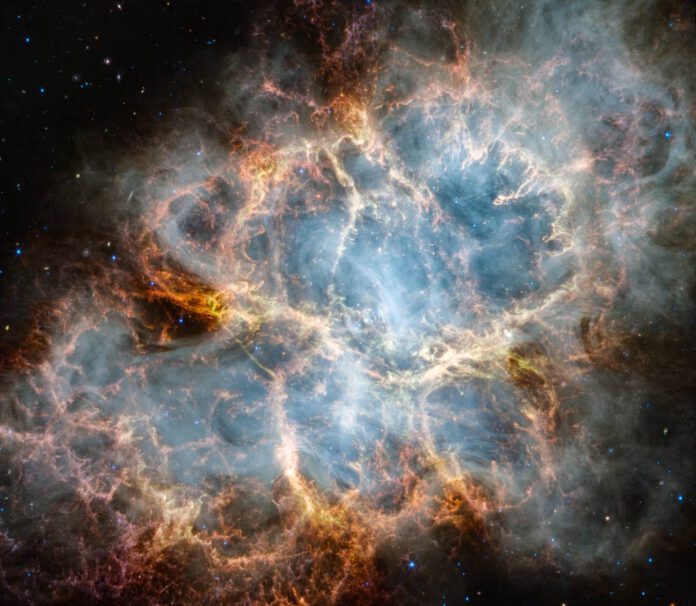
The Crab Nebula Through the Lens of The James Webb Telescope
The Crab Nebula, a renowned supernova remnant has been photographed thousands of times by both amateur astronomers and space telescopes. Recently, it had the honour of being viewed by the James Webb telescope, resulting in a stunning image.
In 1054, Chinese astronomers witnessed the explosion of a star. The star remained visible to the naked eye for 23 days. Situated 6,500 light-years away is the outcome of this event, the Crab Nebula. The supernova remnant has expanded to eleven light-years in diameter and can be located in the constellation Taurus with the aid of a telescope.
Capturing the Image
The photograph taken by the Webb telescope employed the NIRCam (Near-Infrared Camera) and MIRI (Mid-Infrared Instrument). With this infrared image, astronomers are now furnished with an enhanced understanding of the distribution of gas and dust within the first Messier object.
Compact Super-Spheres
At the heart of the Crab Nebula spins a neutron star, or pulsar, making 30 rotations per second. This pulsar possesses a radius of approximately ten kilometers, rendering it smaller than most cities. However, it bears more mass than our sun. Neutron stars are extremely compact and nearly perfect spheres. Did you know the highest “mountains” on neutron stars are less than a millimeter tall?
Capturing Synchrotron Radiation
Similar to the Hubble photo, the wave-like red-orange filaments and gas knots can be seen around the nebula’s center. Upon closer inspection, the central area of the Crab Nebula appears more ‘hazy’ than in the Hubble image, due to synchrotron radiation. The pulsar in the heart of the Crab Nebula generates copious amounts of synchrotron radiation. Scientists can determine the strength, shape, and position of magnetic fields from the erratic patterns of this radiation.
Comparing the twenty-year-old Hubble image with the newest capture by the James Webb Space telescope displays the difference.
Locating the Pulsar
Want to spot the neutron star with your own eyes? The pulsar is clearly visible in the center of the Crab Nebula. Follow the swirling strands at its heart and you’ll eventually reach a bright white star.
Continued Marvels from James Webb
The James Webb Space telescope has been operating for a year and a half now. During this short period, it has shared hundreds of magnificent pictures: from dusty nurseries full of proto-stars to vast galaxies housing supermassive black holes, and from icy realms within our solar system to rare Wolf-Rayet stars. This summer, visitors to Scientias.nl selected the ten most beautiful James Webb pictures. The winner: a terrifying image of the Eagle Nebula. By the end of the year, the annual space picture of the year will be selected and it’s highly possible the Crab Nebula will make a reappearance.











